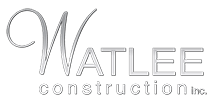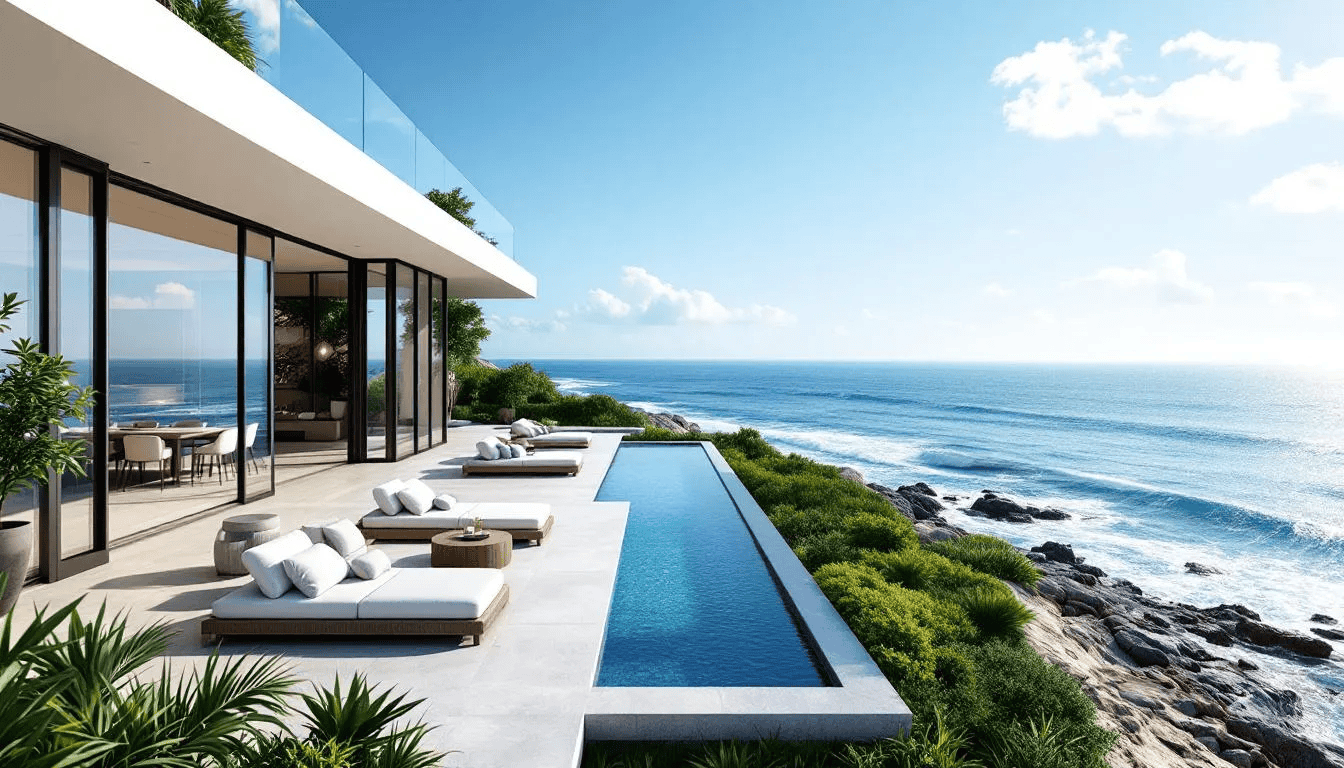The luxury home market has reached unprecedented heights in 2025, with discerning buyers seeking more than just a place to live—they want architectural masterpieces that reflect their success and lifestyle. Construction luxury home projects represent the pinnacle of residential building, where every detail is carefully considered to create spaces that embody both timeless elegance and cutting-edge innovation.
Building a luxury home involves far more complexity than standard residential construction. From sourcing the finest materials from around the globe to integrating advanced smart home technology, luxury home construction demands specialized expertise, meticulous attention to detail, and a proven track record of delivering unparalleled quality. This comprehensive guide will walk you through every aspect of the luxury home building experience, ensuring your dream home becomes a reality that exceeds your expectations.
Key Takeaways
Understanding the fundamentals of luxury home construction sets the foundation for a successful project. Luxury home construction requires specialized expertise, premium materials, and meticulous attention to detail that goes far beyond conventional home building. The construction process typically spans 12-24 months and involves investment levels ranging from $500-$1,500+ per square foot, depending on location and the scope of custom features you envision for your living space.

Smart home technology, sustainable features, and custom architectural elements have become essential components in 2025 luxury construction. Today’s luxury homes seamlessly blend traditional craftsmanship with modern innovation, creating living spaces that adapt to your lifestyle while maintaining their value in the competitive luxury real estate market.
Choosing the right luxury home builder with a proven track record and local expertise stands as the most crucial decision in your luxury home building journey. The difference between a good luxury home and an exceptional one often comes down to the builder’s established relationships with craftsmen, suppliers, and their unwavering commitment to superior craftsmanship.
Proper planning, realistic budgeting, and clear communication throughout the building process ensure a smooth construction experience. Success in luxury home construction isn’t just about having the financial resources—it’s about assembling the right team and maintaining a meticulous process that honors your unique vision while meeting the highest standards of quality and craftsmanship.
What Makes Luxury Home Construction Different
The distinction between standard home building and luxury home construction lies in the extraordinary attention to detail and the pursuit of perfection in every element. Premium materials form the foundation of any luxury home, including imported marble such as the coveted Carrara marble from Italy, exotic hardwoods like Brazilian cherry and teak, and custom millwork crafted by master artisans. These materials aren’t just chosen for their beauty—they’re selected for their performance, durability, and the way they age gracefully over time.
Advanced construction techniques set luxury homes apart from conventional building methods. Steel framing provides superior strength and allows for the dramatic architectural features that define luxury living, such as soaring vaulted ceilings and expansive open floor plans without compromising structural integrity. Insulated concrete form (ICF) foundations offer enhanced energy efficiency and durability, while precision-engineered trusses and supports enable the creation of architectural marvels that would be impossible with standard construction methods.
Custom architectural features represent the hallmark of luxury home design. Grand foyers with imported stone inlays welcome guests with immediate impact, while custom staircases featuring wrought iron railings and marble treads serve as functional art pieces. Wine cellars with precise climate control, home theaters with professional-grade equipment, and multi-story spaces with statement lighting create distinctive homes that reflect the owner’s personality and lifestyle preferences.
The integration of high-end systems distinguishes luxury construction from standard building practices. Smart home automation controls everything from lighting and climate to security and entertainment systems through a single interface. Advanced security systems incorporate biometric access points and surveillance technology, while commercial-grade HVAC systems ensure perfect comfort throughout expansive living spaces.
Specialized craftsmen and artisans bring bespoke elements to life through exceptional craftsmanship. Every door, cabinet, and finish receives individual attention from skilled professionals who understand that luxury means never compromising on quality. These craftspeople often work with multi-generational techniques, ensuring that traditional skills combine with modern innovation to create timeless masterpieces.
Essential Planning Phase for Luxury Home Construction
The planning phase determines the success of your entire luxury home construction project. Thorough site analysis begins with detailed geotechnical surveys and soil testing to inform structural design decisions, particularly crucial for challenging sites like hillsides or waterfront properties. Proper drainage solutions and foundation design emerge from this careful assessment, preventing costly complications during construction.
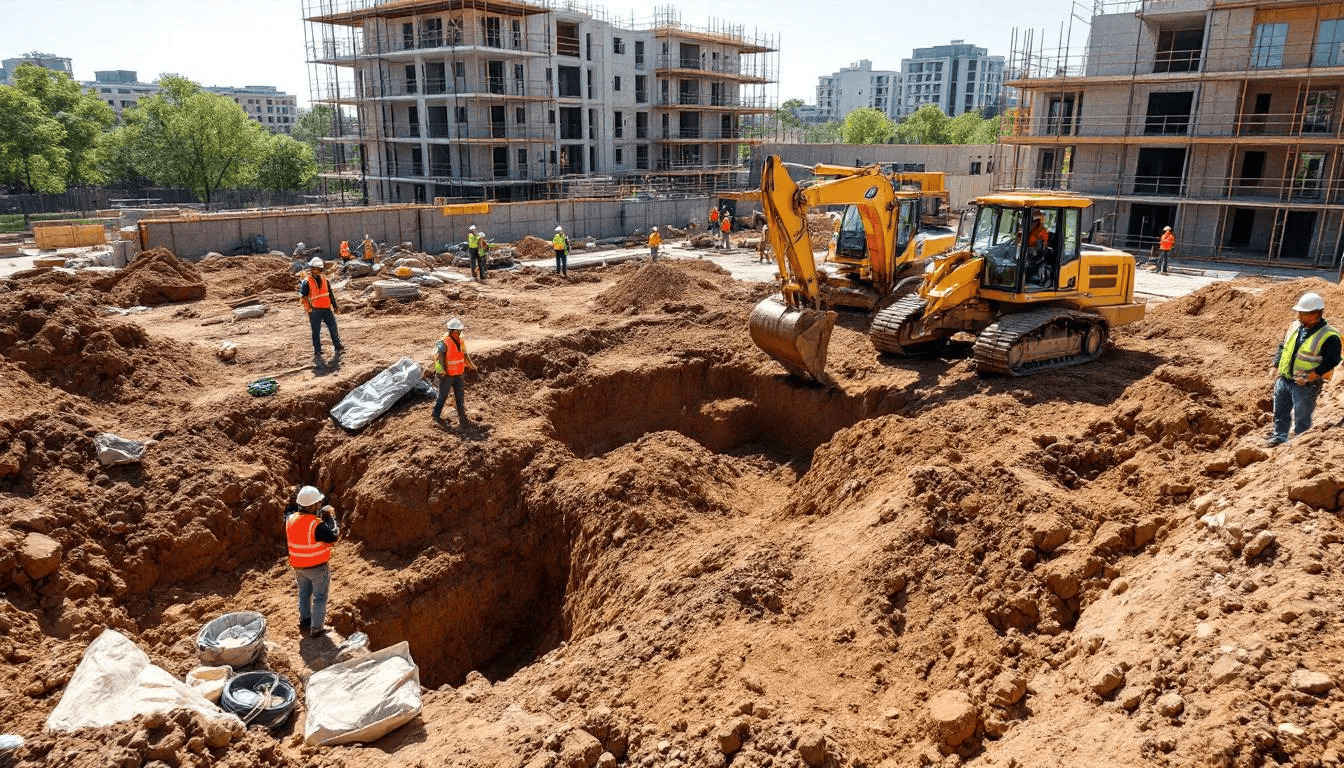
The architectural design process has evolved significantly with technology integration. Today’s luxury home design utilizes 3D BIM modeling and virtual reality walkthroughs, allowing you to experience your future home before construction begins. This immersive approach helps refine your vision while identifying potential issues early in the design phase, ultimately saving time and resources during the building process.
Obtaining proper permits and navigating zoning regulations requires specialized knowledge for luxury specifications. Many luxury features—elevators, commercial-grade kitchens, wine cellars, or guest houses—require additional permits beyond standard residential approvals. Working with experienced professionals familiar with local regulations streamlines this process and prevents delays that could impact your construction timeline.
Creating detailed construction drawings and engineering plans involves multiple specialists working in coordination. Structural engineers design systems capable of supporting unique architectural features, while mechanical, electrical, and plumbing engineers plan sophisticated systems that serve luxury amenities. Landscape architects and lighting designers contribute their expertise to create cohesive outdoor spaces that complement the home’s architecture.
Timeline development must account for the extended lead times required for custom materials and specialized installations. Premium materials often require 12-16 weeks for delivery, while custom millwork and imported fixtures may take even longer. Weather considerations, permit approval timelines, and the availability of skilled craftsmen all factor into realistic project scheduling.
Budgeting for Your Luxury Construction Project
Understanding the financial investment required for luxury home construction enables better decision-making throughout your project. Base construction costs for luxury homes typically range from $500-$1,500+ per square foot in major markets, with the wide range reflecting differences in location, materials, and the complexity of custom features. For perspective, high-end non-luxury construction usually costs $250-$400 per square foot, highlighting the premium associated with luxury specifications.
Land preparation costs vary significantly based on site conditions and can substantially impact your overall budget. Challenging terrain requiring extensive excavation, grading, or specialized foundation work can add hundreds of thousands to your project cost. Similarly, bringing utilities to remote or exclusive locations often involves substantial infrastructure investments that must be factored into your initial planning.
Luxury upgrades represent some of the most significant cost considerations in your budget. Elevator installation averages $50,000-$100,000, while custom infinity pools often cost $150,000-$250,000 or more depending on design complexity and features. High-end home theaters can reach $100,000-$250,000 when equipped with professional-grade audio-visual equipment and custom acoustics. Landscaping with mature trees, water features, and extensive hardscaping routinely exceeds $100,000 for properties that match the quality of the home’s interior.
A contingency fund of 15-20% represents standard practice in luxury construction projects. This buffer accommodates owner changes, unexpected site conditions, and the inevitable refinements that occur as your vision becomes reality. Luxury home construction often involves discovering new possibilities during the building process, and having financial flexibility ensures you can take advantage of opportunities to enhance your finished product.
Ongoing costs extend beyond the initial construction investment and require careful consideration. Property taxes and insurance premiums reflect the increased value of luxury properties and can reach six figures annually in elite markets. Maintenance of specialty systems like elevators, pools, smart home automation, and extensive landscaping creates ongoing operational expenses that responsible homeowners plan for from the beginning.
Luxury Construction Materials and Features
The selection of materials defines the character and quality of your luxury home for generations to come. Natural stone remains the gold standard for luxury construction, with Carrara marble from Italy continuing to command prestige in bathrooms and kitchens. Granite and travertine provide durability and beauty for both interior and exterior applications, while book-matching techniques create dramatic vein patterns that transform functional surfaces into artistic statements.
Exotic hardwoods bring warmth and elegance to luxury interiors through carefully selected species chosen for both beauty and performance. Brazilian cherry (Jatoba) offers rich color and exceptional durability, while teak’s natural moisture resistance makes it ideal for bathrooms and pool areas. Reclaimed barn wood provides character and sustainability for accent walls and ceiling treatments, creating unique visual interest that can’t be replicated with new materials.
High-performance windows represent both functional and aesthetic investments in luxury construction. Triple-glazed, low-E glass provides superior insulation while custom architectural shapes enable unique design possibilities. Large-format sliding glass walls blur the boundaries between indoor and outdoor spaces, while specialty glazing options like bullet-resistant glass address security concerns for high-profile homeowners.
Premium fixtures and finishes from renowned manufacturers ensure both quality and longevity. Brands like Kohler, Waterworks, and Dornbracht dominate luxury plumbing installations, while European appliance manufacturers like Gaggenau and Miele provide commercial-grade performance in residential settings. These investments in quality pay dividends through years of reliable performance and maintained aesthetic appeal.
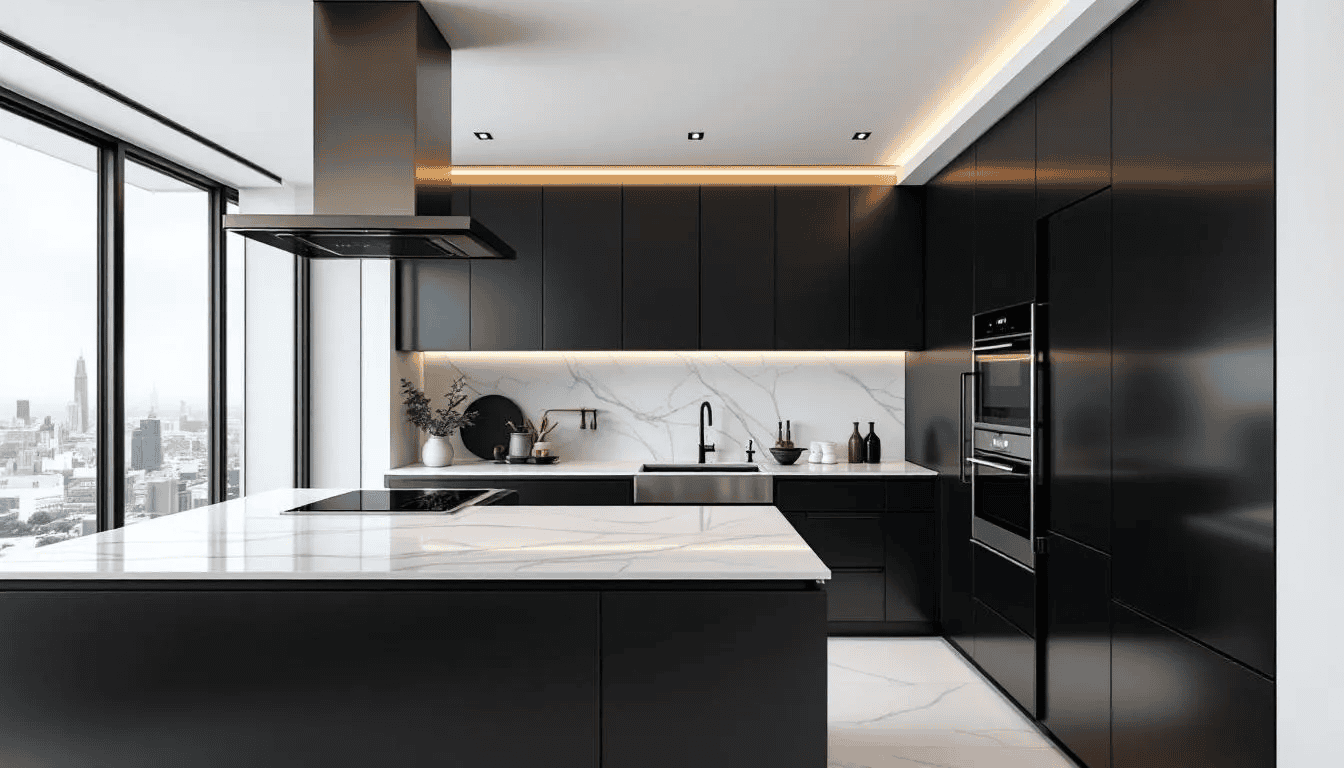
Custom cabinetry represents one of the most visible investments in luxury home construction. Soft-close hardware, integrated lighting, and hidden storage solutions enhance both functionality and aesthetics. European-style frameless construction and furniture-grade materials create built-ins that rival fine furniture in their craftsmanship and attention to detail.
Smart Home Technology Integration
Modern luxury homes universally incorporate integrated home automation systems that simplify daily life while enhancing security and efficiency. Whole-home automation platforms like Control4, Crestron, and Savant provide single-interface control over lighting, window treatments, climate systems, audio-visual equipment, and security systems. These systems learn your preferences over time, automatically adjusting environments to match your lifestyle patterns.
Voice-activated controls and smartphone app integration enable seamless management of your home’s systems from anywhere in the world. Advanced artificial intelligence capabilities allow your home to anticipate your needs, preheating the oven for dinner preparation or adjusting lighting as evening approaches. Integration with popular smart assistants provides intuitive control options that work naturally with your daily routines.
Security systems in luxury homes go far beyond traditional alarm systems to provide comprehensive protection and peace of mind. Biometric access controls using fingerprint or retinal scanning ensure secure entry, while advanced surveillance systems with 4K cameras and AI analytics provide intelligent monitoring. Remote access capabilities allow you to monitor and control security systems from anywhere, providing real-time awareness of your property’s status.
Energy management systems increasingly include renewable energy generation and storage capabilities. Solar panel arrays customized to your home’s architecture and energy needs reduce ongoing operational costs, while battery backup systems like Tesla Powerwall provide energy independence and emergency backup power. Real-time energy monitoring helps optimize consumption patterns and maximize the efficiency of your investment in renewable energy.
High-speed networking infrastructure built into your home’s construction supports current technology needs while providing flexibility for future upgrades. Dedicated technology closets house networking equipment and provide organized cable management, while redundant fiber and wireless systems ensure reliable connectivity throughout your property. Planning for 5G and future wireless technologies protects your investment in smart home systems.
Sustainable Luxury Construction Practices
Environmental responsibility has become an expectation among luxury home buyers, driving innovation in sustainable construction practices. LEED certification or equivalent green building standards provide third-party validation of your home’s environmental performance, with many luxury homes achieving Gold level certification or higher. These certifications consider everything from energy efficiency to indoor air quality and sustainable material selection.
Energy-efficient systems designed for luxury homes balance performance with environmental responsibility. Geothermal heating and cooling systems provide exceptional efficiency while maintaining the comfort levels expected in luxury living. Radiant floor heating offers both comfort and efficiency, while energy recovery ventilation (ERV) systems maintain indoor air quality without sacrificing energy performance.
Sustainable material selection demonstrates that environmental responsibility doesn’t require compromising on quality or aesthetics. Bamboo flooring provides rapid renewal and exceptional durability, while recycled steel framing reduces the embodied carbon of your home’s structure. Low-VOC and formaldehyde-free finishes protect indoor air quality while supporting long-term health and comfort.
Water conservation features address both environmental concerns and ongoing operational costs. Rainwater harvesting systems capture precipitation for landscape irrigation, while greywater recycling systems repurpose water from sinks and showers for non-potable uses. High-efficiency fixtures provide luxury performance while minimizing water consumption, and smart irrigation systems optimize landscape watering based on weather conditions and plant needs.
Native landscaping reduces both environmental impact and ongoing maintenance requirements. Drought-resistant plant selections minimize irrigation needs while providing natural beauty that complements your home’s architecture. Automated irrigation systems with weather monitoring ensure plants receive optimal care while minimizing water waste.
Working with Luxury Home Construction Teams
Assembling the right team determines the success of your luxury home construction project more than any other factor. Architect selection requires identifying professionals with specific expertise in luxury residential design, often including AIA awards and published portfolios that demonstrate their capability to handle complex projects. These specialists understand current luxury design trends, unique feature integration, and problem-solving approaches for challenging sites or demanding client requirements.
General contractor selection demands thorough vetting of experience, financial stability, and reputation within the luxury construction market. Only contractors with proven track records in high-end work, substantial bonding and insurance coverage, and established relationships with specialty subcontractors should be considered. Their previous experience with projects of similar scope and complexity provides the best indication of their ability to successfully manage your construction project.
Interior designers specializing in luxury residential projects bring global sourcing capabilities and coordination expertise that general contractors may lack. These professionals maintain relationships with international suppliers, understand customs and shipping requirements for imported furnishings, and coordinate complex installations that involve multiple trades and specialties. Their expertise ensures that every element of your interior design integrates seamlessly with the architecture and construction.
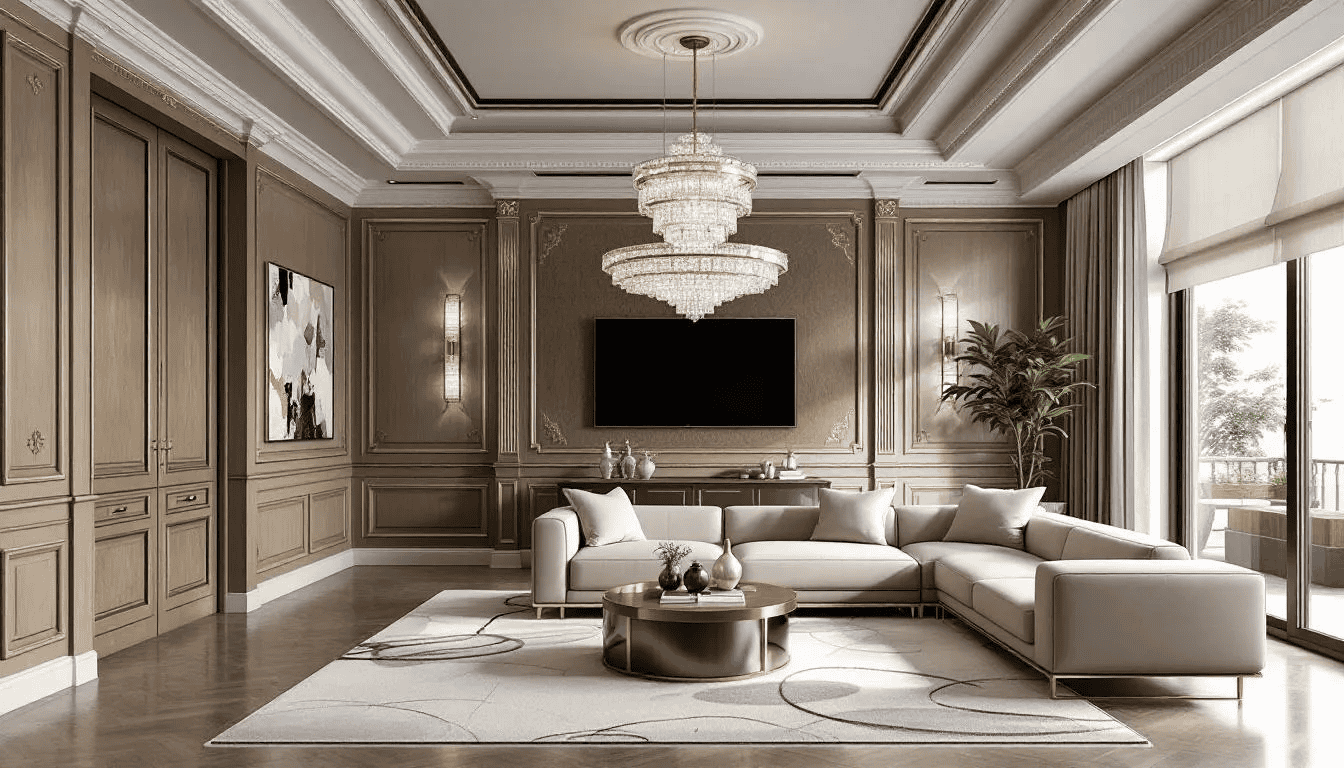
Specialized subcontractors handle luxury features that require niche expertise and equipment. Pool construction, elevator installation, wine cellar design, and smart home system integration each demand contractors with specific training and experience. The sequencing and coordination among these specialized trades requires careful project management to ensure smooth integration without delays or conflicts.
Communication protocols establish the foundation for successful project management throughout the construction process. Weekly or bi-weekly project meetings, regular site visits, and digital update systems keep all stakeholders informed and aligned. Photography documentation, schedule updates, and budget status reports provide transparency that builds trust and enables quick decision-making when issues arise.
Quality Control and Inspections
Third-party inspections provide objective assessment of construction quality at critical milestones throughout the building process. Structural inspections verify that framing and foundation work meets engineering specifications, while mechanical, electrical, and plumbing inspections ensure proper installation of building systems. Final finish inspections confirm that all work meets the luxury standards specified in your construction contract.
Material quality verification protects your investment in premium finishes and components. Stone and wood materials receive inspection for color matching, grain patterns, and structural integrity before installation. Laboratory testing of engineered components ensures they meet specified performance standards, while documentation of material sources provides quality assurance and warranty protection.
Craftsmanship reviews focus on the aesthetic and functional quality that defines luxury construction. Multiple stakeholders including the builder, client, designer, and sometimes independent experts evaluate finish work before final acceptance. This collaborative approach ensures that every visible element meets the exceptional standards expected in luxury home construction.
Smart home and mechanical system commissioning ensures that complex technology operates seamlessly before you move into your new home. Systematic testing of automation systems, HVAC equipment, and specialty installations identifies and resolves any issues while installers and technicians are still on-site. Documentation of system operation and maintenance requirements provides the information needed for ongoing care of your home’s sophisticated systems.
The final punch list represents the culmination of quality control efforts throughout construction. This comprehensive inspection identifies any remaining items requiring attention, from minor finish corrections to system adjustments. Completion of all punch list items before final project acceptance ensures that you receive the finished product you contracted for without compromise.
Timeline and Construction Process
Luxury home construction follows a carefully orchestrated sequence that balances quality with efficiency throughout the building process. The pre-construction phase typically spans 3-6 months and includes final design refinement, value engineering to balance budget and wish list items, and completion of all permit approvals. This phase also involves finalizing material selections and confirming availability to prevent delays during active construction.
Foundation and framing work requires 2-4 months depending on the complexity of your home’s design and site conditions. Challenging geological conditions, complex foundation systems, or architectural features like basements on sloped sites can extend this phase. The precision required for luxury construction means that rushing this critical phase often creates problems that are expensive and time-consuming to correct later.
Mechanical, electrical, and plumbing installation takes 2-3 months and includes rough-in work for all building systems. This phase also includes installation of technology infrastructure for smart home systems, structured wiring for audio-visual equipment, and any specialty systems like central vacuum or whole-house generators. Coordination among multiple trades requires careful scheduling to maintain project momentum.
Interior finishing represents the longest phase of luxury construction, typically requiring 4-8 months to complete. Custom millwork installation, imported tile and stone work, cabinetry fitting, and specialized finishes each require time and attention to achieve luxury standards. The sequential nature of finish work means that delays in one trade can impact the entire schedule, making quality project management essential during this phase.
Final inspections, landscaping, and occupancy preparation usually require 1-2 months to complete. Certificate of occupancy approval, system commissioning, and final cleaning prepare your home for move-in. Hardscape and landscape installation create the outdoor spaces that complete your luxury living environment, while owner orientation sessions familiarize you with your home’s systems and maintenance requirements.
Regional Considerations for Luxury Construction
Geographic location significantly influences both construction methods and costs for luxury home projects. California coastal areas require specialized seismic engineering to ensure earthquake resistance, while fire-resistant construction methods including Class A roofing and noncombustible cladding address wildfire risks. Site-specific structural engineering accommodates local seismic codes while maintaining the architectural vision for your luxury home.
Florida luxury construction must address hurricane-force wind loads through impact-rated windows and doors, reinforced roofing systems, and elevated construction where required by flood zones. Building envelope design considers both wind resistance and moisture management in the challenging subtropical climate, while architectural details must withstand salt air exposure in coastal locations.
Northeast construction emphasizes superior insulation and robust building envelope design to handle extreme temperature variations and heavy snow loads. Advanced roof engineering accommodates deep snow accumulation, while heating system design ensures comfort throughout harsh winters. Freeze protection for plumbing systems and consideration of ice dam prevention influence both design and construction methods.
Desert Southwest construction prioritizes cooling system efficiency and UV protection for both occupants and building materials. Advanced insulation strategies, low-E glass selection, and roof overhang design provide solar heat gain control, while material selection considers UV degradation and thermal expansion. Large solar installations often integrate with luxury home design to provide energy independence in sunny climates.
Architectural review board requirements in many luxury communities add complexity to the design and approval process. Strict architectural guidelines maintain community aesthetics but may require design modifications or extended approval timelines. Understanding local requirements early in the design process prevents delays and ensures your home complements the surrounding luxury real estate development.
Luxury Amenities and Special Features
Resort-style pools represent one of the most popular luxury amenities, with infinity edges creating dramatic visual effects and seamless integration with landscape design. Integrated spas, programmable lighting systems, and audio equipment transform pools into entertainment destinations. Custom mosaic tilework or natural stone finishes provide artistic elements that complement your home’s overall design aesthetic.

Home theaters in luxury residences rival commercial facilities in their technical capabilities and comfort features. Professional-level audio-visual installations, acoustic treatments, and custom seating create reference-quality entertainment experiences. Soundproofing ensures that your enjoyment doesn’t disturb other areas of the home, while automated lighting and climate control optimize the viewing environment.
Wine cellars combine storage functionality with entertaining spaces through precise climate and humidity control systems. Custom racking accommodates extensive collections while display areas showcase prized bottles. Adjacent tasting lounges with specialized ventilation and temperature control create ideal environments for wine appreciation and entertainment.
Fitness centers equipped with commercial-quality equipment provide convenience and privacy for health and wellness activities. Integrated spa facilities including saunas and steam rooms enhance the luxury experience, while specialized flooring and ventilation systems create appropriate environments for various types of exercise and relaxation.
Outdoor living spaces extend your home’s luxury into the landscape through fully equipped outdoor kitchens and covered dining areas. Pizza ovens, rotisseries, and commercial-grade refrigeration enable sophisticated outdoor entertaining, while fire features and all-season heating systems extend usability throughout the year.
Unique Architectural Elements
Grand foyers create immediate impact through the use of imported stone inlays, dramatic lighting installations, and architectural features that establish the luxury character of your home. Multi-story spaces with statement chandeliers or custom art installations welcome guests while providing a preview of the craftsmanship and attention to detail found throughout the residence.
Coffered and cathedral ceilings showcase both architectural skill and interior design sophistication through custom wood or plaster detailing. Integrated lighting systems highlight architectural features while providing functional illumination, and acoustic considerations ensure that large spaces maintain appropriate sound characteristics for conversation and entertainment.
Curved and geometrically complex staircases serve as functional art pieces that demonstrate both engineering skill and artistic vision. Custom railings featuring wrought iron work or other artistic metalwork combine with stone or hardwood treads to create architectural focal points that reflect your personal style and the overall design theme of your home.
Floor-to-ceiling glass installations maximize natural light and views while creating seamless connections between indoor and outdoor spaces. Advanced glazing technologies provide energy efficiency without compromising the visual impact of expansive glass areas, while automated window treatments offer privacy and solar control when needed.
Custom fireplaces anchor living spaces through the use of imported stone surrounds and innovative design features like multi-sided or see-through configurations. Gas log systems provide convenience and clean burning, while architectural integration ensures that fireplace design complements the overall room composition and home architecture.
Common Challenges in Luxury Home Construction
Weather delays represent one of the most unpredictable challenges in luxury construction, with sudden storms, extended rain periods, or extreme temperatures halting outdoor work and creating scheduling complications. Mitigation strategies include flexible scheduling, covered work areas where possible, and contingency plans that minimize weather-related impacts on project timelines and quality.
Custom material lead times create logistical challenges that require early planning and careful coordination. Imported marble, bespoke hardware, and artisan millwork often require 12-16 weeks or more for production and delivery, while global shipping disruptions can extend these timelines further. Early material ordering and backup supplier relationships help minimize delays caused by material availability issues.
Change orders during construction represent both opportunities and challenges in luxury projects. While modifications allow for improved designs or upgraded features, they typically impact both budget and schedule. Clear change order procedures and realistic cost and timeline estimates help manage these adjustments while maintaining project momentum.
Skilled labor shortages affect luxury construction more severely than standard building projects due to the specialized craftsmanship required. High demand for qualified artisans, custom installers, and luxury-experienced trades means that top professionals often have months-long backlogs. Early contractor selection and maintained relationships with quality trades help ensure availability when needed.
Permitting delays particularly affect luxury construction due to the unique features and complex systems often involved. Design review boards, specialty permit requirements, and coordination among multiple approval agencies can extend approval timelines beyond initial estimates. Working with experienced professionals familiar with local approval processes helps navigate these challenges efficiently.
About Watlee Construction, Inc.
When it comes to construction luxury home projects, the expertise and reputation of your chosen builder determines the success of your investment. Watlee Construction, Inc. stands as a renowned luxury home builder with an unwavering commitment to delivering homes that represent the pinnacle of quality and craftsmanship. With a rich history of creating distinctive homes throughout various markets, Watlee Construction has established itself among the top luxury home builders through immense pride in their work and meticulous attention to every detail.
The team at Watlee Construction, Inc. brings exceptional craftsmanship to every luxury home building project, understanding that luxury means more than expensive materials—it means creating homes that reflect each client’s vision while exceeding the highest standards of construction quality. Their established relationships with premium suppliers, master craftsmen, and specialty subcontractors enable them to source the finest materials and coordinate complex installations that define high end living.
What sets Watlee Construction apart in the competitive luxury home market is their carefully considered approach to each project, treating every home not just as a construction job, but as an opportunity to create architectural marvels that stand as timeless masterpieces. Their construction management expertise ensures that the building process proceeds smoothly, with clear communication and transparent project updates that keep clients informed and confident throughout their home building experience.
The finished product from Watlee Construction represents more than just luxury real estate—it represents a lifestyle achievement that provides high end living for generations. Their meticulous process, from initial design consultation through final touches, demonstrates why discerning clients choose Watlee Construction when they refuse to compromise on quality. Whether you’re envisioning a contemporary masterpiece or a traditional estate, Watlee Construction, Inc. has the proven track record and expertise to transform your unique vision into reality.
For those seeking to create their perfect home through luxury home construction, Watlee Construction, Inc. offers the combination of technical expertise, artistic vision, and project management skills necessary to deliver unmatched quality results. Their commitment to excellence and client satisfaction has established them as a trusted partner for clients who understand that building a luxury home requires more than financial resources—it requires a builder who shares your commitment to creating something extraordinary.
FAQ
How long does luxury home construction typically take? Most luxury homes require 12-24 months from groundbreaking to completion, depending on size, complexity, and custom features. The timeline includes 3-6 months for pre-construction planning, 2-4 months for foundation and framing, 2-3 months for mechanical systems, 4-8 months for interior finishing, and 1-2 months for final inspections and landscaping.
What is the average cost per square foot for luxury home construction? Costs range from $500-$1,500+ per square foot, varying significantly by location, materials selected, and luxury features included. Premium locations like coastal California or exclusive resort communities typically command higher costs, while the upper end of this range reflects ultra-premium materials and extensive custom features.
Do I need special permits for luxury home features? Yes, features like elevators, pools, wine cellars, commercial-grade kitchens, and advanced smart home systems often require additional permits beyond standard residential approvals. Many luxury communities also have architectural review processes that add time and complexity to the approval process.
How do I choose the right luxury home builder? Look for builders with extensive luxury portfolios, proven track records with projects similar to yours, proper licensing and insurance, and strong references from recent clients. Verify their relationships with quality subcontractors and suppliers, and ensure they have experience with the specific luxury features you want in your home.
What warranty coverage should I expect? Reputable luxury builders provide comprehensive warranty coverage including 1-year all-inclusive warranty, 2-year coverage on major mechanical, electrical, and plumbing systems, and 10-year structural warranty as minimum standards. Many luxury builders offer extended coverage on specialty systems and custom installations.
Can I make changes during construction? While changes are possible during construction, they typically increase both costs and timeline significantly. Major design decisions should be finalized during the pre-construction phase to minimize delays and cost overruns. When changes are necessary, work with your builder to understand the full impact on budget and schedule before proceeding.
